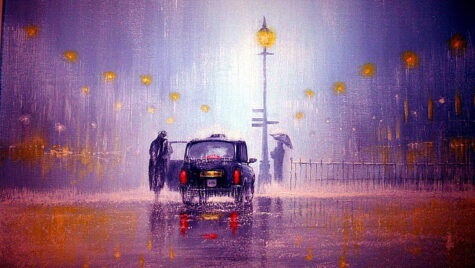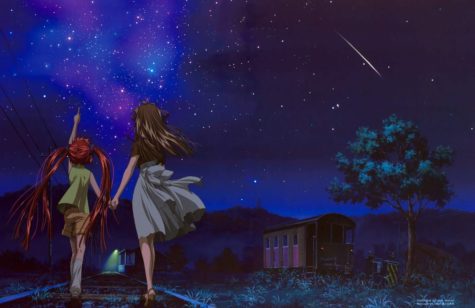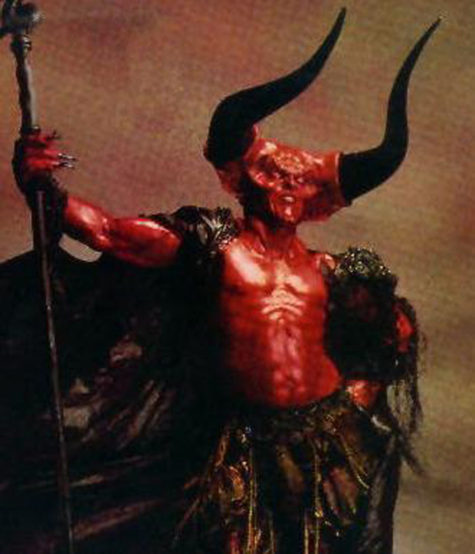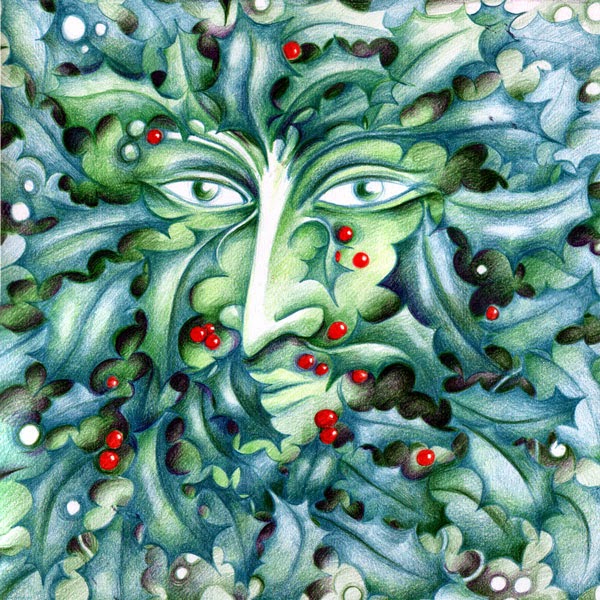Folklore and Superstition
A Yurei Taxi Ghost Story
The cabdriver knew that the ghosts of Japan were not confined to ancient graveyards and shadow-haunted shrines. Any modern resident of the nation’s capital could tell you that the taxis of Tokyo are more haunted than hearses, and his own route took him regularly through open gates to the spirit world.
There was Sendagaya tunnel, which winds beneath the cemetery of Senjuiin Temple, or Shirogane tunnel, where legend has it that screaming faces are silhouetted against the tunnel’s pillars and through which the Shinigami – the spirit of Death itself – is said to pass. All of his fellow cabbies could wax a yarn of passengers who got on then disappeared, or of catching a glimpse of a woman or child’s face in the rear view mirror. He too had a story to tell.
It was a stormy autumn night, near Aoyama Cemetery, where he picked up a poor young girl drenched by the rain. It was dark, so he didn’t get a good look at her face, but she seemed sad and he figured she had been visiting a recently deceased relative or friend. The address she gave was some distance away, and they drove in silence. A good cabbie doesn’t make small talk when picking someone up from a cemetery.
When they arrived at the address, the girl didn’t get out, but whispered for him to wait a bit, while she stared out the window at a 2nd floor apartment. Ten minutes or so passed as she watched, never speaking, never crying; simply observing a solitary figure move about the apartment. Suddenly, the girl asked to be taken to a new address, this one back near the cemetery where he had first picked her up. The rain was heavy, and the driver focused on the road, leaving the girl to her thoughts.
When he arrived at the new address, a modern house in a good neighborhood, the cabbie opened the door and turned around to collect his fare. To his surprise, he found himself staring at an empty back seat, with a deep puddle where the girl had been sitting moments before. Mouth open, he just sat there staring at the vacant seat, until a knocking on the window shook him from his reverie.
The father of the house, seeing the taxi outside, had calmly walked out bringing with him the exact charge for the fare. He explained that the young girl had been his daughter, who died in a traffic accident some years ago and was buried in Aoyama Cemetery. From time to time, he said, she hailed a cab and, after visiting her old boyfriend’s apartment, asked to be driven home. The father thanked the driver for his troubles, and sent him on his way.
~From: Tales of Ghostly Japan, True Tales of Tokyo Terror Taxis
The Folklore of Falling Stars
Some scholars speculate, based on common legends between various cultures around the globe, that the old practice of “wishing upon a shooting star” originates from a time when people believed that the gods would occasionally open the dome of heaven to peek in on what the mortals were doing on Earth. This opening of the dome released a star, and if one made a wish while there was still light, and before the dome slammed shut, the gods might hear and grant the wish.
In Switzerland, it was thought that shooting stars possessed the power of God and could ward off pestilence.
The Swabians believed a shooting star foretold a year of good luck.
In Chile, a shooting star is also an omen of good luck, but one must quickly pick up a stone to guarantee the luck.
In the Philipines, one must tie a knot in a handkerchief before the light is extinguished to capture the good luck of a shooting star.
Some people of Hawaiian or Japanese descent believe if you see a shooting star coming in your direction, you must open the collars/breast of your kimono to admit the good luck.
Also in Swabia, a person seeing 3 shooting stars in one night was doomed to die.
In Lithuanian folklore, it’s believed that a spinner spins a thread for each new life and attaches it to a star. At the moment of a person’s death, the thread breaks and the star falls to Earth.
The Seneca believed that pointing to a shooting star would reveal one’s location to the star, with ill effect.
Some Hispanic cultures believe that one must utter “God guide it” upon seeing a shooting star to avoid bad luck.
The Baronga culture would spit on the ground upon seeing a shooting star and cry out “go away, go away, all by yourself” to avoid bad luck.
In some parts of the Catholic deep south US, it is believed that shooting stars are souls leaving purgatory for heaven.
In Catholic Germany, it was believed that a shooting star was a suffering soul seeking prayers from those who observed it. If one recited “rest in peace” three times before the light extinguished, then the soul would be delivered from purgatory.
In some Philippine cultures, it is believed that shooting stars are the souls of drunkards which return to Earth at night to sing “do not drink, do not drink“. Each day they attempt to climb back up to heaven, but fall down each time.
Some Muslims believe shooting stars are fireballs thrown down on devils by vengeful angels.
Some old Russian cultures believe shooting stars are demons who were transformed and chased out of heaven.
In Austria, upon seeing a shooting star near one’s house, the children were brought inside and sprinkled with holy water.
It was thought in some Germanic cultures, that shooting stars were fire-breathing dragons, if you insulted or cursed one of them, they would rain stinking cheese and rubbish down upon Earth. Some believed in influencing the dragon with an offering, whereupon the passing dragon would leave a gift of ham or bacon. The fire dragon also carried money which it would sometimes drop, making people rich.
In Polish folklore, it’s thought that a falling star would drop one of three things – a treasure, a gelatinous mass, or cow dung!
Found at Telescope Reviews
What You Should Know About Snakes
While researching snakes, I came across this nifty little tidbit. It’s a list of do’s and don’ts when it comes to snakes.
A. Don’t cross a snake’s path unless you slide or shuffle your feet.
B. You’ll have leg aches – other diseases – bad luck.
A. Don’t eat in front of a snake.
B. When you get older, your throat will close.
A. Don’t watch a snake swallow it’s food.
B. Your neck will swell up.
A. Don’t watch a water snake swallow.
B. You’ll lose your voice.
A. Don’t open your mouth when you see a snake.
B. He’ll jump in.
A. Don’t kill snakes or lizards.
B. It will make your heart small – dry up – you will get a crooked back.
A. Don’t burn a snake.
B. You’ll get sores – rash.
A. Don’t kill a snake when it is raining.
B. Lightning will strike your house.
A. Don’t put a snake in the open when dead.
B. The lighting will bring it back to life.
A. Don’t put a dead snake on a rock.
B. You’ll cause a thunderstorm – it will come back to life.
A. Don’t kill a snake with your hand.
B. Your hand will swell up.
A. Don’t go to the bathroom in front of a snake.
B. He will be jealous of your wife and turn her yellow.
A. Don’t pick up things between two fingers.
B. Only snakes do that.
A. Don’t watch snakes having intercourse.
B. You’ll go blind.
A. Don’t step on a snake.
B. Your legs will swell up – get crooked.
A. Don’t draw in the sand with your fingers.
B. Snakes will come to it.
A. Don’t talk about snakes.
B. They will come around.
A. Don’t laugh at a snake.
B. It will bite you.
A. Don’t make faces at a snake.
B. It will bite you some day.
A. Don’t spit at a snake.
B. It will get after you.
A. Don’t watch a snake crawl out of its skin.
B. You’ll get sick or jump out of your skin.
A. Don’t shoot an arrow at a snake.
B. It will go crooked – hit something else – be spoiled.
A. Don’t run over a snake in your car.
B. You’ll have a bad life.
A. Don’t break snake eggs.
B. The snakes will get you.
A. Don’t wear anything made out of snakeskin, especially boots or shoes.
B. You will get crippled.
A. Don’t touch a snake.
B. It has nothing and it will make you have nothing.
A. Don’t call a person a snake.
B. You’ll be bitten by one.
A. Don’t urinate on roads that cross each other.
B. That is the same as a snake trail
~Navajo Taboos; Ernie Bulow, 1991
Old Stories About the Devil
When the devil appeared to Cuvier, the great man looked at him nonchalantly and asked curtly: “What do you wish of me?” “I’ve come to eat you !” said the devil. But the great anatomist’s shrewd eye had already examined him. “Horns and hoofs !” he retorted, “granivorous. You can’t do it!” Whereupon, outfaced by science, Satan departed.
Plinius Secundus remembers a house at Athens which Athenodorus, the philosopher, hired, and which no man durst inhabit, for fear of the haunting devils. Hesperius, the tribune’s house, at Zubeda, near the city of Hippos, was also thus haunted; and he was so much vexed with these demons and ghosts that he could not rest.
Vasari, the Italian painter and biographer (d. 1574), tells the following strange tale of Spinello of Arezzo. When this artist had painted, in his famous fresco of the fall of the rebellious angels, the devil as a hideous demon and with seven heads about his body, the fiend came to him in the very bodily form he had conceived him, and asked the artist where he had seen him so, and why he had portrayed him in such a manner and put such a shame upon him? When Spinello came out of the vision, he was in a state of terror, and falling into a melancholy, soon died.
A mythical personage who originated in German folklore, was Friar Rusk. He was a fiendish looking creature who was really a devil, and kept monks and friars from leading a religious life. He was probably at one time a good natured imp like Robin Goodfellow, but under the influence of Christian superstition, he became the typical emissary from Satan who played tricks among men calculated to set them by the ears, and who sought by various devices, always amusing, to fit them for residence in his master’s dominions. (Tuckerman, “History of Prose Fiction.”)
Freischiitz, the free shooter, is a name given to a legendary huntsman who, by entering into a compact with the devil, procures balls six of which infallibly hit, however great the distance, while the seventh, or according to some of the versions, one of the seven, belongs to the devil, who directs it at his pleasure. Legends of this nature were rife among the troopers of Germany in the fourteenth and fifteenth centuries, and during the Thirty Years’ War. The story first appeared in Apel’s “Ghost Book,” and was made known to all civilized countries by Weber’s opera in 1821. Continue reading
James Cheney: Invocation To The Dark Mother
Daniel: Prayer Before The Final Battle
blessed obyno: Queen of Ghosts
blessed obyno: Queen of Ghosts
Caerlion Arthur: The Great, Bloody and Bruised Veil of the World








